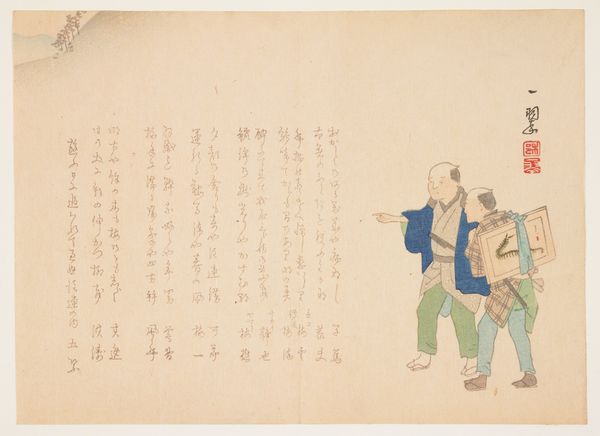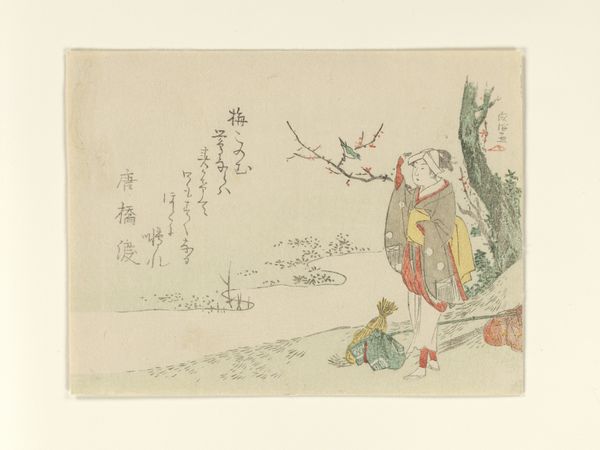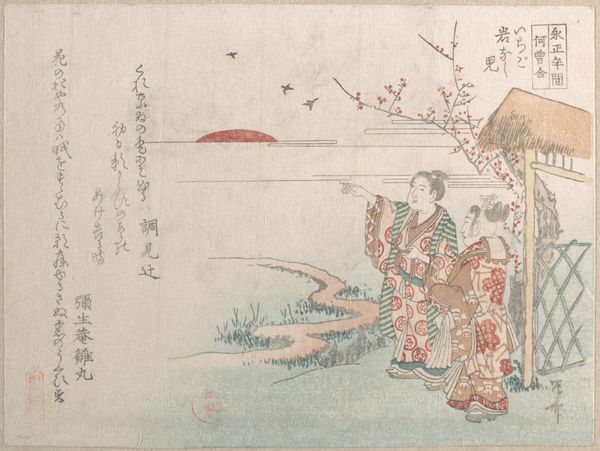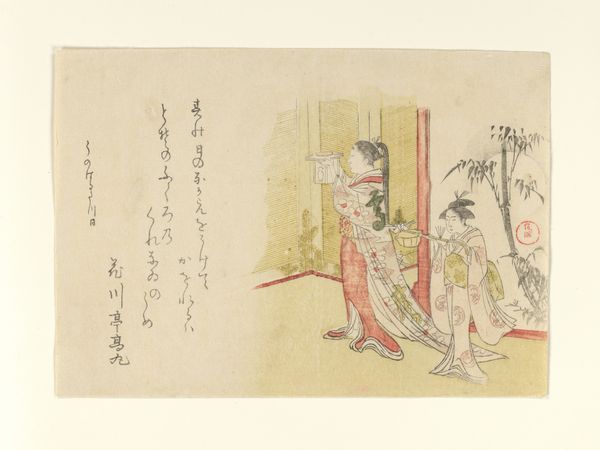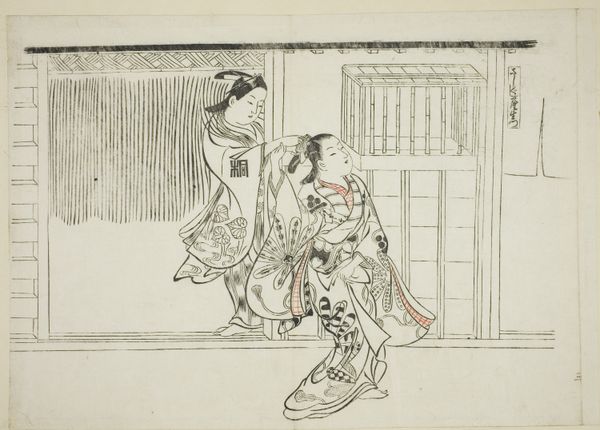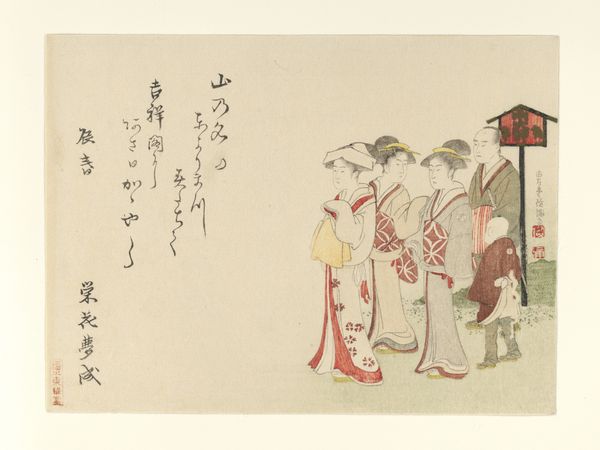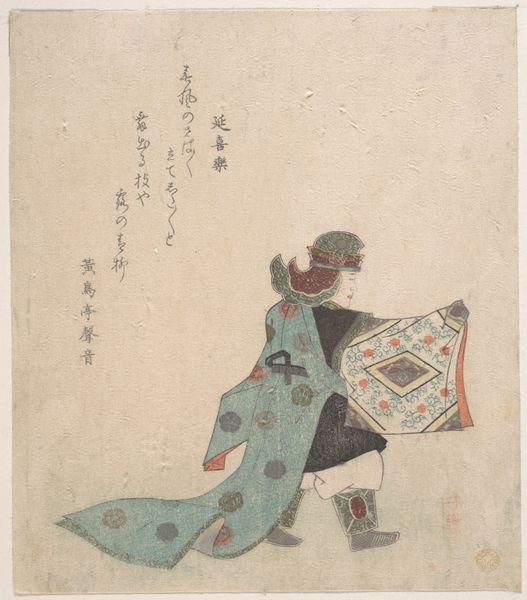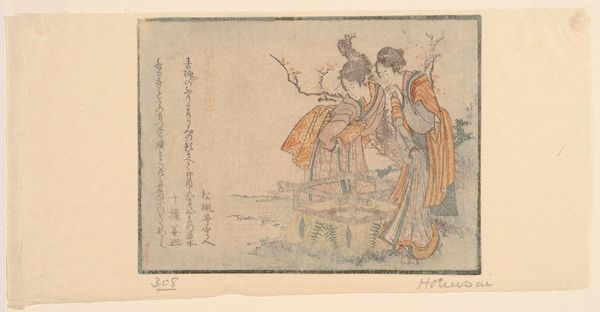
print, woodblock-print
#
portrait
# print
#
asian-art
#
landscape
#
ukiyo-e
#
woodblock-print
#
watercolor
Dimensions: height 254 mm, width 127 mm
Copyright: Rijks Museum: Open Domain
Curator: Allow me to introduce Utagawa Hiroshige's woodblock print, "Pluimbal tijdens Nieuwjaar," created between 1850 and 1855. It's currently held here at the Rijksmuseum. Editor: My first impression is one of airy lightness. The muted colors and vast expanse of empty space above the figures create a sense of tranquil contemplation, almost melancholy, despite what seems to be a joyful game. Curator: Precisely! Note how Hiroshige uses negative space, characteristic of the Ukiyo-e tradition, to amplify the intimacy of the figures in the scene. The asymmetrical composition draws the eye upward, mimicking the trajectory of the shuttlecock itself. The placement of the figures guides the eye across the entire picture plane. Editor: Yes, but I see this airy composition, these muted blues, not just as design elements, but reflective of the era's social rituals surrounding New Year celebrations. Notice their formal dress—indicative of the socio-cultural importance placed on these holiday activities as a symbolic transition into the new year. The game is not just about badminton but the perpetuation of customs, with social roles embodied within this familial ritual. Curator: That is valid, but look also at the texture achieved through the woodblock printing technique, a method requiring intense collaboration between the artist, block carver, and printer, where each line, color, and even the paper itself plays into its reception. The delicate watercolor palette contributes to its serene tone. I would argue it elevates a mundane game to an aesthetic study of form. Editor: Aesthetic it certainly is, but form is born from function and is then elevated into ideology. That function here is societal cohesiveness and a visual encoding of hierarchies. These visual traditions themselves reinforce communal expectations within society. Consider it like this... Curator: While I appreciate the cultural perspective, I see this emphasis on the game, figures, dress, etc., as detracting from the genius design where each visual decision impacts the eye's passage through this composition. Its value is a lesson in spatial and design language itself. Editor: Indeed, a dialogue emerges as we interpret the layers, as art's power resides not in singularity but its reflective diversity of understanding over time. Curator: Indeed, art calls for this very discussion, allowing new visual strategies to emerge for an eager future of viewers and art makers.
Comments
No comments
Be the first to comment and join the conversation on the ultimate creative platform.


